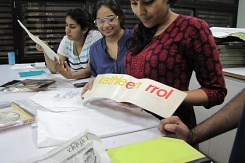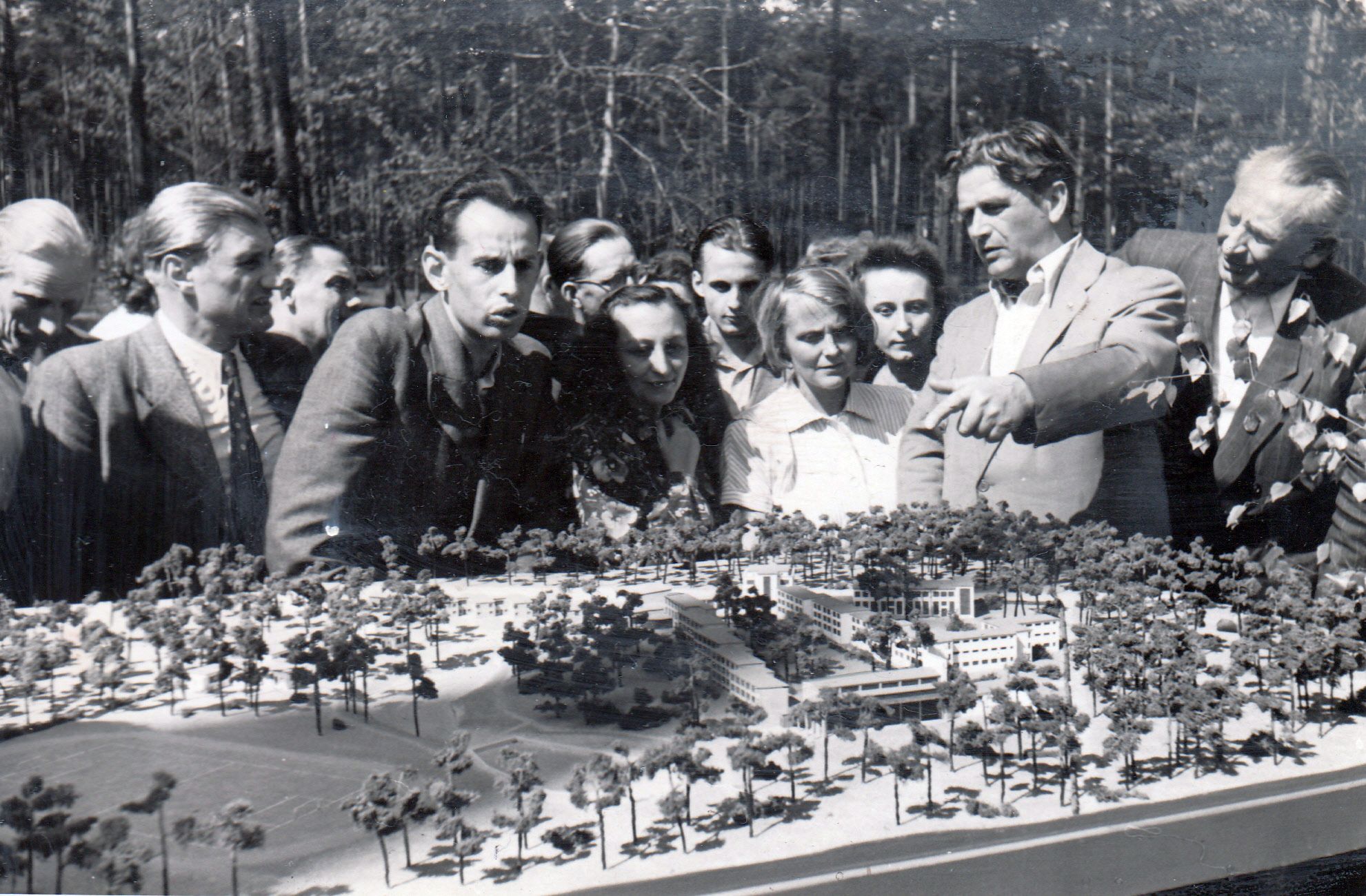I started to build what was then called the New Culture Studios in 1967 some years after arriving in Ibadan to teach at the university and to design theatrical production there. I started with my personal studio for painting and sculpture and a residential villa, all of which were constructed using traditional methods and local materials—clay, granite and laterite. I later extended this personal studio to include other facilities, including postgraduate teaching facilities for graduates of the arts and theater studies from the University of Ibadan, where I was an instructor at the time. Prompted by an amphitheater I had scooped out of the hillside location of my studio for use as a life-size model in preparation for designing and constructing an African playhouse, I initiated an expansion of the studio for other creative purposes. For want of what to do with a live-scale amphitheater, I started to hold dance classes in the dusty amphitheater. To make the space more versatile, I started to develop the ad hoc theater space into a permanent structure. At this point, the pioneering art institution the Mbari Artists and Writers Club, founded in 1960, was struggling on account of the grant that had established it initially had run out. To rescue this institution for artists and writers, I decided to relocate the club in its entirety to my studio, a project I planned to accomplish by 1970. As a result, a publishing house was established at the New Culture Studios, which began publishing the New Culture magazine in 1976, along with other occasional art and theater publications. Previously I had added a film laboratory to the studio complex to facilitate cinematographic study and practice. Thus, over time and through a process of accretion the full complement of facilities needed to practice almost all the creative arts were built in this one location, creating a cultural synthesis among the practitioners of the different art disciplines, due to their continuous intimate interaction in a common work/study environment. I imagined this would eventually crystallize into a harmonious cultural aesthetics.
The Philosophy behind the New Culture Studios
As a postgraduate school, the New Culture Studios has played a complementary role to formal tertiary institutions, providing a place for practical and professional training. Traditional African culture (and by this I also mean society) utilizes art of all kinds—produced at the highest level of accomplishment—making the Western demarcation between the fine and popular arts irrelevant. African societal institutions have and still demand that the creative arts exist as a necessary and integral part of life and living, perhaps the most important part. Therefore, a continuously new aesthetic culture has to be forged to produce values relevant to good living for all, at all times, using a new language fashioned out of the rich variety of our traditional past and the social reality of the contemporary moment.











































.jpg?w=245&h=163&c=1)








.jpg?w=245&h=163&c=1)











